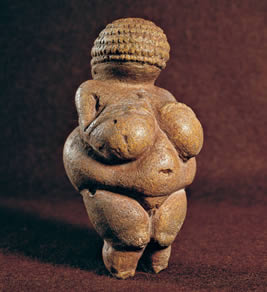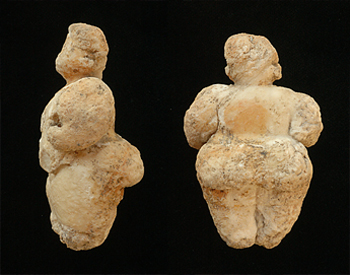Valdivia culture consisted of a sedentary fishing village settled in a region that now forms the coast of the province of Guayas, from southern Manabí province to the north of the province of El Oro in Ecuador. This culture developed cutting and polishing stone and then the production of ceramics with a predominance of geometric figures in red, black and gray. In agriculture developed the corn crop, which was considered an important food resource and apparently was in charge of village women.
The importance of women within the worldview Valdivia, has been reflected in a number of statues found buried in the field and some graves. So-called «Venus de Valdivia» in the first period were carved in stone and then clay, which facilitated the molding material of faces, hairstyles, and various forms among which are female genitals. Hairstyles of small figurines nude, show various shapes and sizes who excel in all images, some are considered the backbone of the whole.
Based on the concept that the symbolism of primitive art is intimately connected with magical practices and by the diversity of details relating to the genitals, breast development and the gravid state exhibiting these figures, the primary explanations have been assigned symbolic category as promoters of fertility icons, probably amulets, idols or votive offerings to fertilize the land and to promote human fertility.
Other interpretations identify the representation of various facets of life of women by emphasizing their reproductive role: youth, pregnancy, childbirth and lactation. A particularly interesting version holds that the figures symbolize the female development from infancy to adulthood and the hairstyle would be the signature element. Girls represent balding and as the figures appear more developed bodies of adult women have more hair to reach important painstakingly combed hair. Some would be in the reproductive process, sometimes not. Some would be abstract and other highly stylized, there are figures that were used as pendants, or were shamanic rattles.
The truth is that no interpretation is focused on the representation of any deity the icons refer to a gender identity with sexual traits young and reproductive female.
In the collection, there are several two-headed sculptures, suggesting a model of duality in our opinion is very risky to interpret. They can be icons that purport to represent two lives in a single person (female gestation) or two stages of a lifetime (pubertal and reproductive), maybe two people in one body (sexual and maternal identity) or other, all existing dual perception of primitive man.
It is very interesting to know the scope of this iconography that symbolizes the different stages and facets of a woman’s life, exalting its central involvement in the reproductive process and recognizing its influence on soil fertility as the manifestation of a fertility magic within their perspectives supernatural.









Deja un comentario